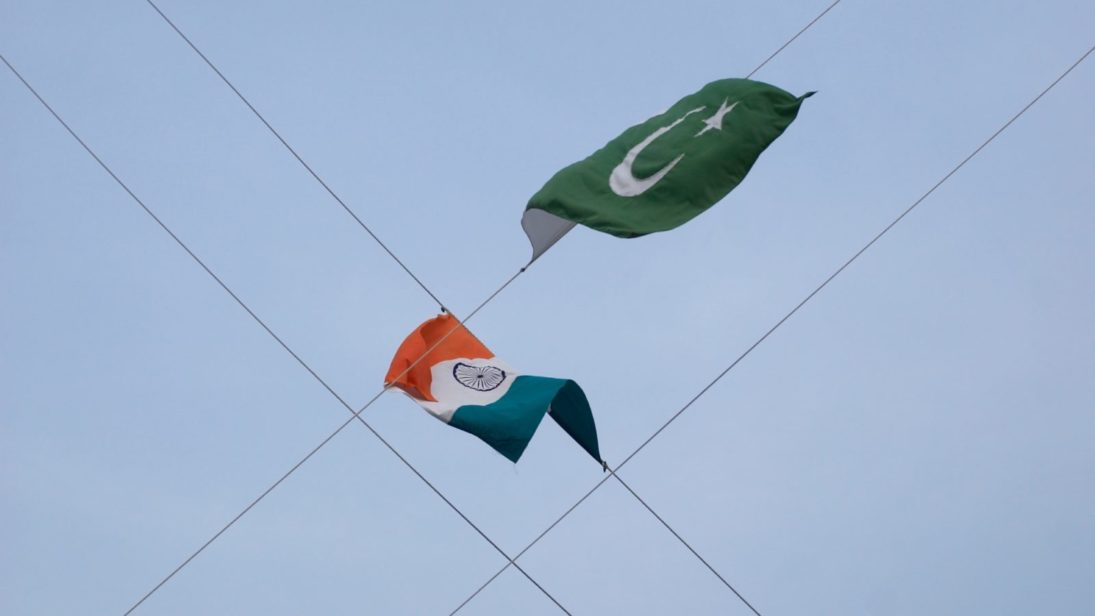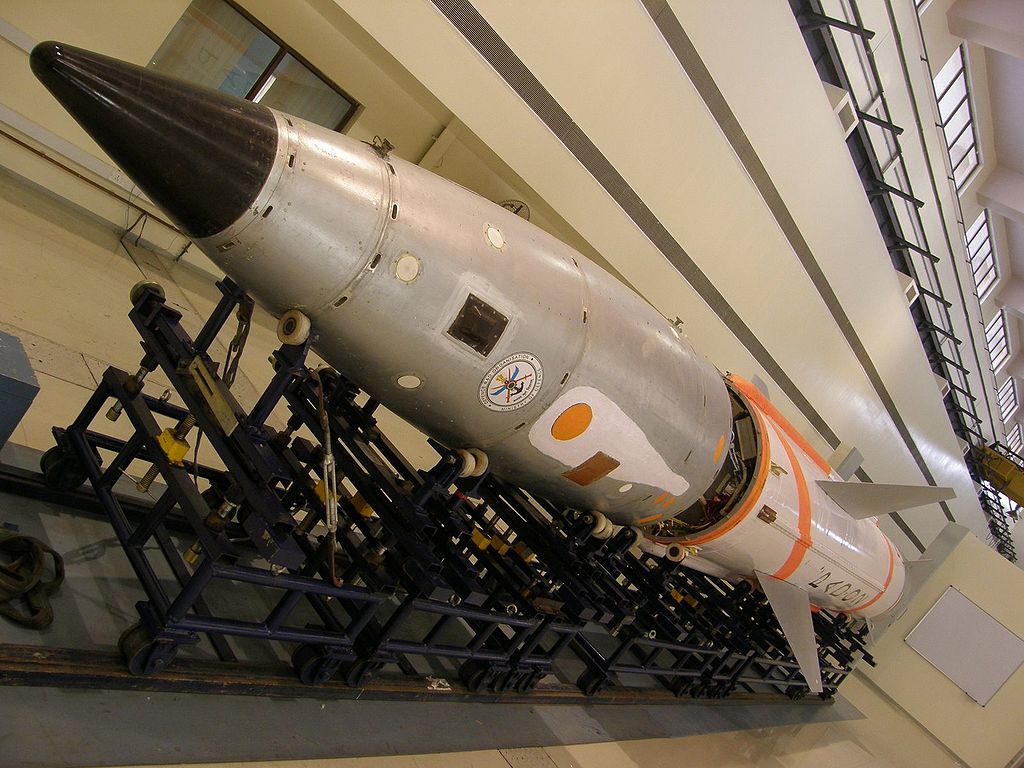
Editor’s note: This is the first piece in South Asian Voices’ review series of the Off Ramps Initiative, a Stimson Center project that examines the trilateral nuclear arms race between China, India, and Pakistan and proposes innovative ideas to decrease nuclear dangers in Southern Asia. Each author in this three-part series will review an Off Ramps proposal and offer a critique as to the proposal’s viability and impact it could have on nuclear deterrence in the region. Read the entire series here.
The nuclear arms race between China, India, and Pakistan has kept issues related to nuclear deterrence in the spotlight for almost two decades. This trilateral dynamic reached a new level of complexity last January when Pakistan tested its Ababeel missile. This missile has the ability to carry multiple independently targetable re-entry vehicles (MIRVs) or warheads and can thus strike multiple targets with “high precision, defeating the enemy’s hostile radars,” according to a press release from Pakistan’s Inter-Services Public Relations agency.
The Indian security establishment responded with renewed calls to accelerate the induction of India’s Ballistic Missile Defense (BMD) capabilities. This context forms the backdrop of Sadia Tasleem’s essay entitled “No Indian BMD for No Pakistani MIRVs” as part of the Stimson Center’s Off Ramps Initiative. This prescriptive proposal recommends Pakistan forgo its MIRV capability if India renounces and dismantles its BMD systems. Nonetheless, her propositions remain unworkable given that BMD and MIRVs are not comparable technologies, with the former representing an Indian effort to preserve its stabilizing no-first-use (NFU) nuclear doctrine.
Summary
Tasleem’s argument is an important one in that it advances nonproliferation goals by limiting the spread of two important deterrence technologies. In particular, Tasleem suggests that if both India and Pakistan are unwilling to sign a formal treaty related to MIRVs and BMD systems, India and Pakistan should adopt a voluntary, political commitment followed by a “unilateral moratoria” on their respective programs. Such moratoria could then be codified into a formal agreement within a five-year period.
Tasleem also provides a succinct overview of the challenges both India and Pakistan might face in trying to achieve such an agreement. In particular, India’s Defense Research and Development Organization (DRDO) has a “financial stake” in the development of BMD technologies and may consequently resist eliminating the program. For Pakistan, giving up its MIRV ability while India continues with the development of its own MIRV capability may be a non-starter given Pakistan’s desire to achieve offensive nuclear asymmetry in response to India’s conventional superiority.
Considering the significance of these technologies, it is understandable that India and Pakistan’s threat perceptions have compelled each country to formulate countermeasures as a strategy for survival. However, Tasleem seems to advance a misperception about these technologies that justifies Pakistan’s pursuit of MIRV capabilities. This article, therefore, challenges the argument posed in Tasleem’s essay on technical grounds and reaffirms the logical basis for India’s BMD program development.
Inescapability of BMD due to India’s nuclear doctrine
India’s logic for developing its BMD capability stems from its stated nuclear posture of NFU of nuclear weapons. Once functional, BMD infrastructure would neutralize most scenarios of nuclear first strike and allow India’s political leadership to launch a retaliatory second strike. It also supports nuclear stability and security by allowing India to keep its nuclear weapons in the lower state of readiness and de-mated from missile delivery systems. As a senior Indian military official has argued, “the first-strike capability of nuclear-weapon states with smaller arsenals can be negated by BMD, and because the arsenals of no-first-use states are relatively small, protecting a second-strike capability is an absolute necessity.”

For any nuclear country with an NFU doctrine, attaining an effective BMD system is thus a logical step. India’s BMD program began in the 1990s and tested its first interceptor in 2006. Over this period, China and Pakistan have developed and tested their own ballistic and cruise missile systems. Apart from the Ababeel test, Pakistan also successfully tested its Babur-3 submarine-launched cruise missile from an underwater mobile platform last January. In February 2017, China launched its MIRV-capable inter-continental ballistic missile (ICBM), the Dongfeng or DF-5C, with a range of over 12,000 kilometers that encompasses the entire subcontinent.
As such, it is understandable why India, a country that is sandwiched between two nuclear states, has developed its BMD system. It is also notable that India has planned to only place its BMD systems at two undisclosed locations, further reinforcing the Indian position of protecting its high value targets and not proliferating weapons. At the moment, however, India’s BMD systems are not fully functional given technical and resource challenges.
Pakistan’s pursuit of MIRVs, which are a cost effective and accurate form of expanding its nuclear deterrence, necessitates India’s development of BMD. As such, India is moving ahead with developing a full-fledged BMD capability in order to maintain the sanctity of its NFU posture and retain the high moral ground in matters of nonproliferation. It is also clear that BMD for India is a primarily defensive technology, unlike MIRVs. Any offensive technology has repercussions in the form of creating a security dilemma for other states that only exacerbates the arms race dynamic. Thirdly, with the continued activity of non-state actors in Pakistan and the belligerent stance of the Pakistani military towards India, BMD provides the first-line of defense against any case of nuclear brinkmanship or blackmail. Therefore, to equate Pakistan’s MIRV development to India’s BMD systems, as Tasleem does, is not technologically or logically coherent.
Conclusion
The concern raised in Tasleem’s article is a worthy topic for discussion, but linking Indian BMD and Pakistani MIRVs simply does not add up in the way she describes. Striving for a fully functional and accurate BMD system fits perfectly within India’s stated NFU nuclear doctrine. Conversely, Pakistan’s first-use doctrine mandates an approach of massive retaliation to a conventional Indian attack. Indeed, Pakistan continues to develop additional warheads and delivery systems under the guise of responding to Indian BMD. However, it is clear that the uniquely defensive nature of India’s BMD cannot be equated with Pakistan’s pursuit of MIRVs and other nuclear weapons technologies. As such, proposing a trade for Indian BMD and Pakistani MIRVs is ultimately an unworkable prospect.
***
Image 1: My Past via Flickr.
Image 2: Ajai Shukla via Wikimedia Commons.


